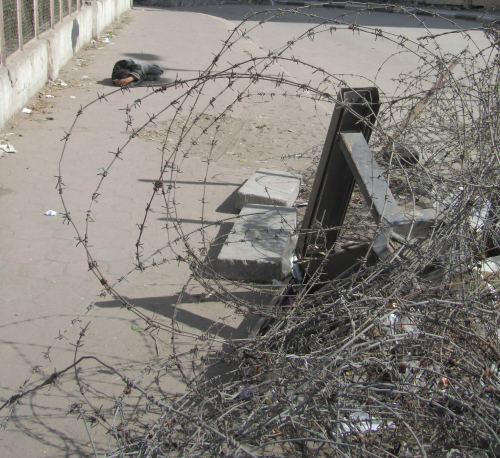Chapter 7Egypt

I – Revolution II
The biggest enemy of the regime is if life goes back to normal and people start asking why they wasted three years of their life on a revolution when nothing very much has changed.
Wael Ziada
Head of Research
EFG Hermes
I land in Cairo on the anniversary of Egypt's uprising against three decades of military dictatorship – the revolution that inspired rebellions from Bahrain to Libya and Syria.
The mood is tense. Four bombs have exploded here in the past 48 hours.1
In Tahrir – or Liberation – Square, the central thoroughfare for the Arab world's biggest city, barbed wire blocks every entry and exit point.
Soldiers watch nervously.
In front of them, a carnival plays out into the evening.
Patriotic music blasts from cars draped with flags and pictures of Abdel Fattah el-Sisi, the army general turned president. Men dance and clap, women sit on plastic chairs with picnics.
“I am so happy with the new Egypt,” says Mohamed, standing with his two infant daughters, their faces daubed in red, white and black. They pose for my camera making victory signs, the girls struggling to hold up an el-Sisi poster bigger than them.
“We came here to celebrate with the people,” he says. “This is the most beautiful country in the whole world. Our hopes are with el-Sisi.”
Those less enamored with the new Egypt have been kept well away – over a thousand of them arrested ...
Get Frontier: Exploring the Top Ten Emerging Markets of Tomorrow now with the O’Reilly learning platform.
O’Reilly members experience books, live events, courses curated by job role, and more from O’Reilly and nearly 200 top publishers.

